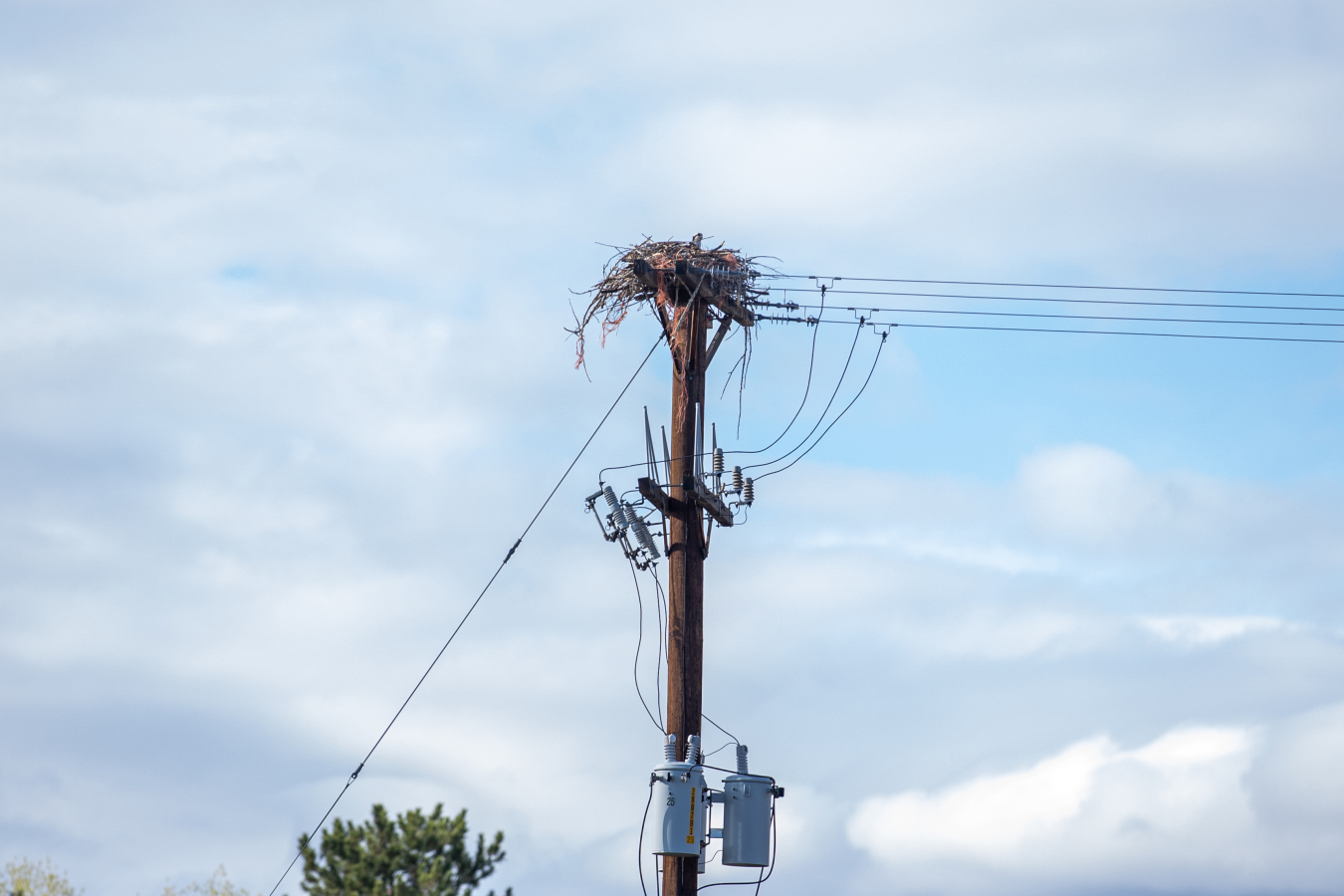Spring and summer osprey watching, hatching are underway.
June 2, 2021Two ospreys have made their home at Atomic Legacy Cabin, located on the Grand Junction, Colorado, office campus of the U.S. Department of Energy Office of Legacy Management (LM). The osprey couple, as well as their future fledglings, are doubly protected, considering that ospreys are federally protected under the migratory bird treaty act and their home is on federal property.
What exactly are ospreys? They are large eagle-like hawks with a white chest, belly and black brown back. They also have a dark stripe across the eyes. Their bodies are slender with long, narrow wings and legs and weigh around three pounds. As ospreys take flight, they have a distinct kink in their wings, creating an “m” shape. Ospreys are smaller than bald eagles but larger than red-tailed hawks.
Ospreys build their nests primarily from sticks but will utilize many materials they find nearby. In some cases, this may even include litter or bailing wire. Female ospreys lay one to four eggs in the spring and these eggs will often hatch during the month of June. (Watch for the baby photos in future posts.)

Spring is here at LM’s Atomic Legacy Cabin and so is young love — bird love, that is. A pair of ospreys has made its nest just above the Atomic Legacy Cabin and staff are in love with watching the birds from afar. The fledging osprey will hatch in June, and we can’t wait to be in love with their new baby birds, too.
Ospreys generally build their nests near a body of water, such as salt marshes, ponds, reservoirs, estuaries, coral reefs, ponds and rivers. Several ponds as well as the Gunnison River are located near the Atomic Legacy Cabin, providing the nesting ospreys with an excellent food source as the young hatchlings grow.
The main food source for ospreys is fish, comprising of nearly 99% of their diet. Osprey are the only raptor that will plunge into the water to catch fish with their long, hooked talons. Occasionally, an osprey will catch an eel, snake, or frog to add a bit of diversity to their diet.
“The small staff currently at the complex are very excited about the pair nesting so close,” said Shawn Montgomery, LM Public Participation Specialist. “Birders are welcome to swing by and view the birds. We ask you keep a respectable distance and be aware that the male osprey can get a bit aggressive if visitors get too close. We will keep you abreast of the happenings of our fine feather friends over the next few months and more information on ospreys.”

